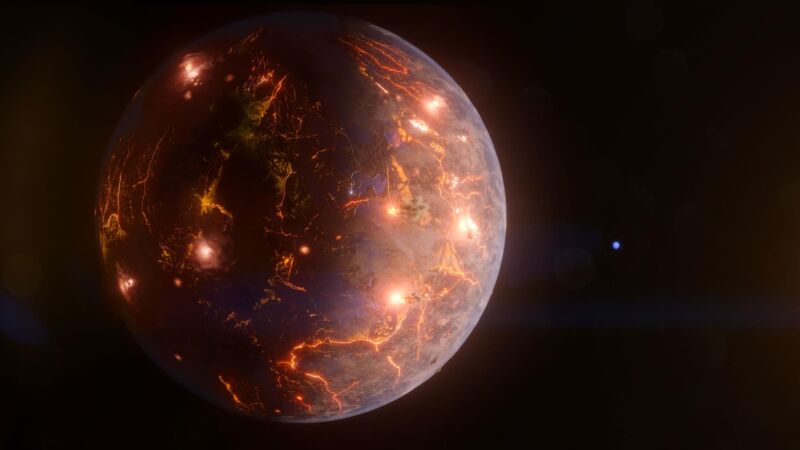For most of the exoplanets we've discovered, we know very few details. We know a bit about the star they orbit and maybe a partial list of other planets in the same system. And we typically know either how large they are or how heavy they are. It's not a lot to go on.
But we can infer a lot when we start combining those details. That's the case for a newly discovered exoplanet orbiting a small star about 90 light-years from Earth. The planet itself has a radius and mass very similar to the Earth's, suggesting it also has a rocky composition. Based on what we know of the star, it can potentially contain liquid water. And, based on the forces exerted by nearby planets, it's likely to have very active geology, potentially including volcanoes.
An extra, extra-solar planet
The exosolar system at the star LP 791-18 was first discovered by the Transiting Exoplanet Survey Satellite (TESS). TESS had spotted two planets orbiting LP 791-18, which is one of the smallest—and thus dimmest—stars known to host planets. The innermost planet, LP 791-18b, is about 20 percent larger than Earth and takes less than a day to complete an orbit, meaning it's close enough to the star to be very hot. Farther out, with a five-day orbit, is LP 791-18c, a sub-Neptune that's more than double Earth's size.
Their discovery led to some of the last observations done by the Spitzer Space Telescope before it was shut down, providing over five days of observations in total—just enough to capture two transits of LP 791-18c, the outermost planet, as it passed across the line of sight between its host star and Earth. But this data also captured two additional transits, suggesting that another planet might be present, orbiting between the two known planets.
That was enough to kick off a multi-year, multi-telescope effort that confirmed the existence of LP 791-18d, which takes a bit under three days to complete an orbit. But the effort went considerably beyond that by measuring variations in the timing of when planets transited in front of LP 791-18. These transit timing variations are caused by the relative positions of the three planets, which determine whether they produce gravitational tugs that either slow down or speed up their respective orbits.
By measuring enough of the transit timing variations, the researchers inferred how strong those gravitational tugs were and used that to get mass estimates for the outer two planets.
For the outermost planet, LP 791-18c, the estimated mass is roughly seven times Earth's. Based on its radius is 2.4 times larger than Earth's, if the planet had an Earth-like composition, then we'd expect it to be about 25 times Earth's mass, so this indicates that it has a lot of lighter materials. The research team concludes that it either has a substantial hydrogen/helium atmosphere, or that roughly half the planet is composed of icy materials.
And the second-outermost planet, the newly discovered LP 791-18d, has an Earth-like radius (officially 1.03 times Earth's, with error bars that include Earth's radius). Its mass is somewhat lower, at 0.9 times Earth's, but that's still consistent with a largely rocky composition.



3175x175(CURRENT).thumb.jpg.b05acc060982b36f5891ba728e6d953c.jpg)
Recommended Comments
There are no comments to display.
Join the conversation
You can post now and register later. If you have an account, sign in now to post with your account.
Note: Your post will require moderator approval before it will be visible.